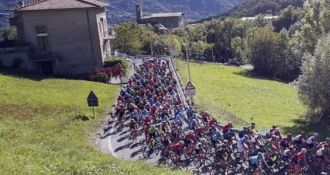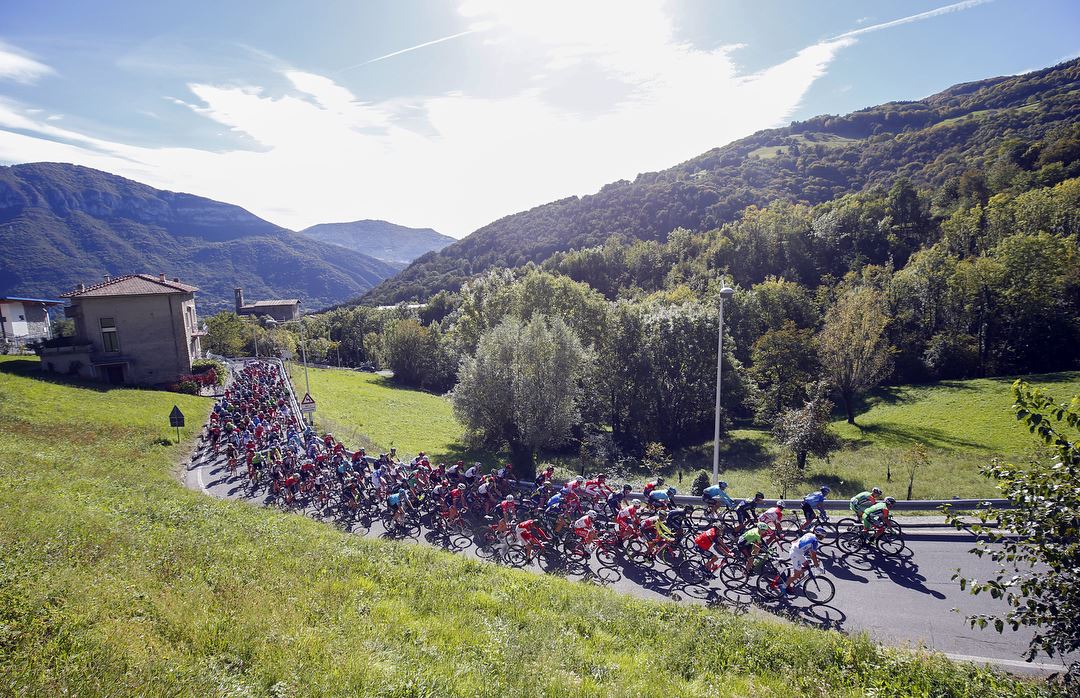

Every cycling enthusiast has gone through some sort of initiation, either self-taught or driven by friends and club mates. At the beginning of that education, you’d be forgiven for believing the sport is hopelessly over-complicated; multiple perplexing classifications, intermediate sprints, specialist races… You’ll no doubt have heard of the Tour de France, and most likely you’ve got some idea what the Spring Classics are. The next module is to wrap your head around the Monuments – what some consider the greatest races of them all.
What are the Monuments?
There are five Monuments in cycling and all have distinct characteristics. It all starts with Milan-Sanremo, otherwise known as “La Primavera†or the Sprinters’ Classic, in mid-March. Then there is the formidable duo, the Tour of Flanders and Paris-Roubaix, the two most sought-after cobbled classics. The former is hillier than the latter, which has arguably the most famous finish in cycling with a lap of the Roubaix velodrome. Next up is Liège-Bastogne-Liège during Ardennes week. The oldest race in the sport, L-B-L is also known as “La Doyenne†(the old lady), and often hosts some of the worst weather of the season. Finally, at the end of a long summer, we have Il Lombardia, also known as the “Race of the Falling Leavesâ€, the autumn Monument which favours punchy climbers like Vincenzo Nibali, Esteban Chaves and Dan Martin.
Tradition
To the question “what makes the Monuments so special?†there are any number of answers. One thing that most enthusiasts can agree on though is that these races are extra special because of their century-long anthology of stories. What’s more, every one of these races has an element of adversity with which the riders must grapple if they are to succeed. Milan-Sanremo has the distance and the Poggio, Paris-Roubaix has an agonising number of cobbled sectors, Liège-Bastogne-Liège has its leg-sapping climbs.
All or nothing
The Monuments are famous for luring a hotlist of characters to the start line, a host of riders who will stop at nothing to make it to the finish, hurling every last reserve into their quest for victory. Anything can happen in the classics and there is even more at stake in the Monuments. Crashes disrupt the racing, weather makes everything harder, and if you miss out on the decisive move, you’ve got to wait a whole year to try again. These races demand an all or nothing attitude that is hard to replicate.
The key protagonists
In the modern peloton, there are a number of riders who show off the ballsy attitude of a Monuments Man. Philippe Gilbert is the most prolific of the lot having won three of five with only Milan-Sanremo and Paris-Roubaix remaining elusive. Peter Sagan and Greg van Avermaet both have all the necessary characteristics, holding the Tour of Flanders and Paris-Roubaix respectively. One rider who doesn’t exactly fit the physical mould of a classics man is Vincenzo Nibali, but the Italian considered a Grand Tour specialist has now won Il Lombardia (twice) and Milan-Sanremo (the Sprinters’ Classic, remember?), so is more than qualified.
The bikes
How many races do you know which have a bike named after them? How many days in a year require a uniquely designed bike specifically for the terrain? Without the likes of Paris-Roubaix, it’s likely that a whole category of design and innovation would never have had cause to exist in the first place. But thank goodness they did, because bikes like the pioneering Specialized Roubaix and the Trek Domane have facilitated not only classics victories, but optimal comfort and efficiency for amateur riders.
Now that you know what you’re watching, it’s time to get excited about the upcoming Monuments. The Tour of Flanders is next on Easter Sunday – it’s the 102nd edition of the famous cobbled classic.